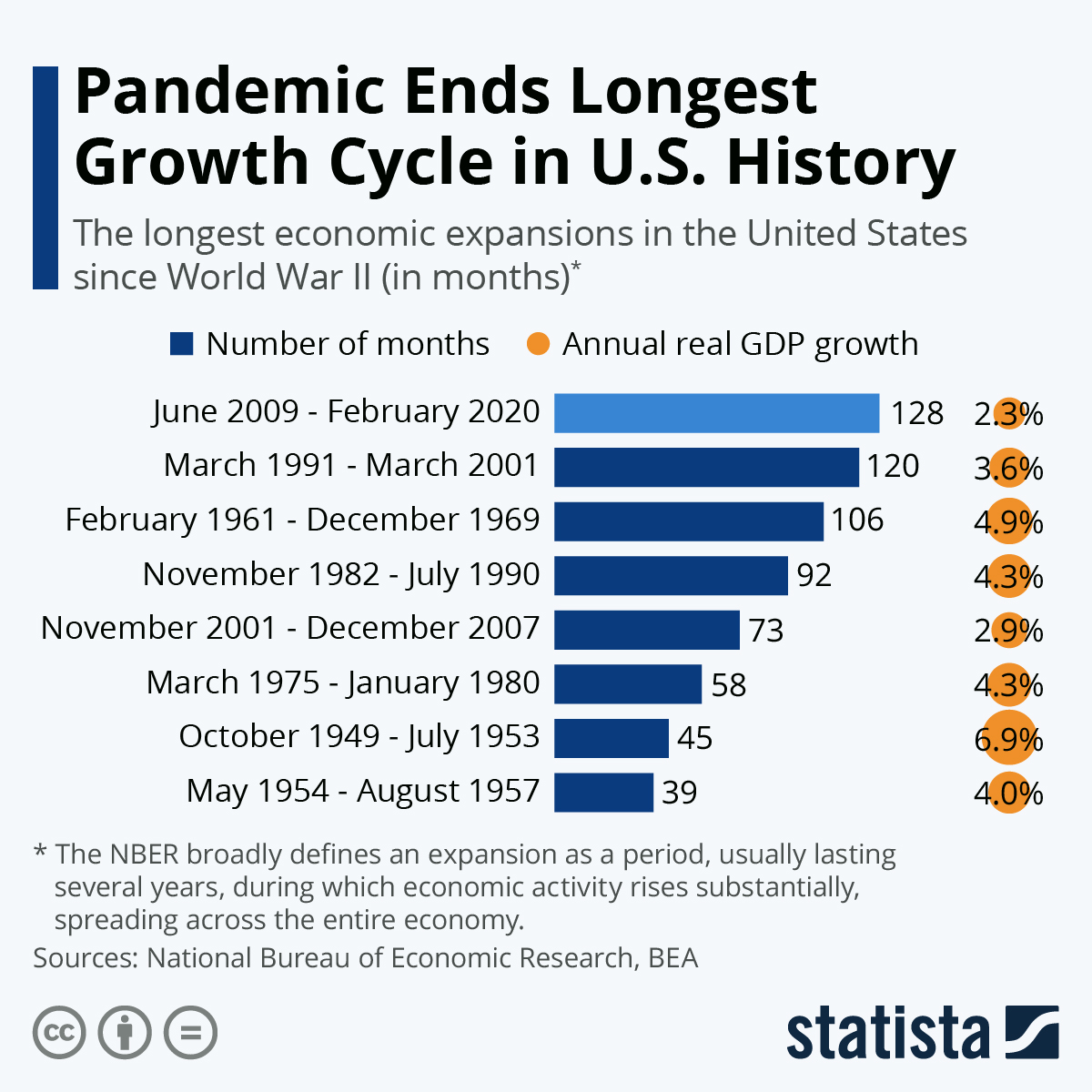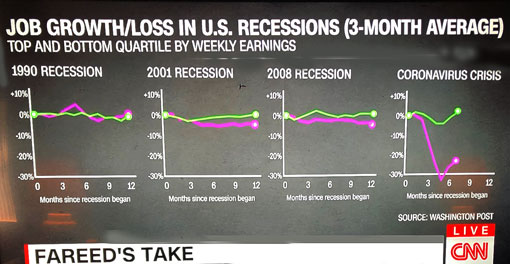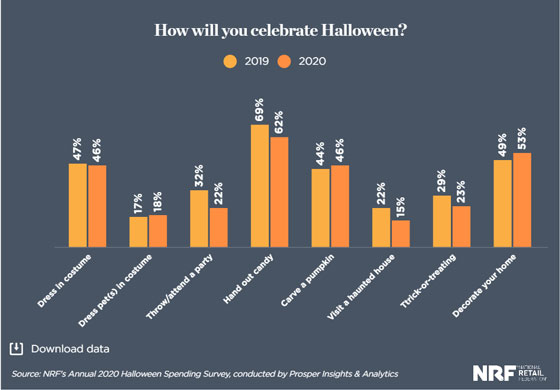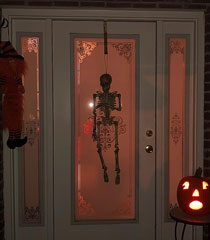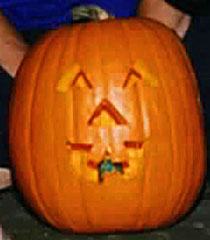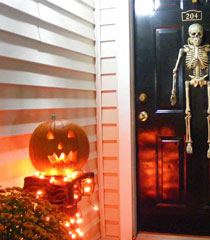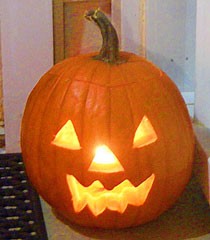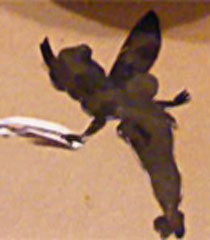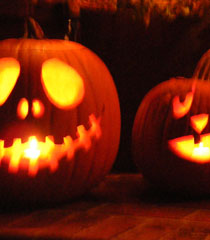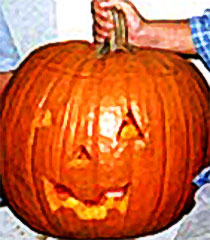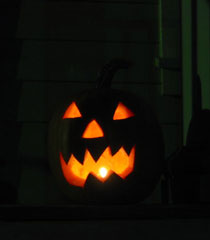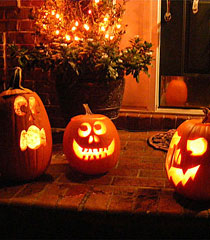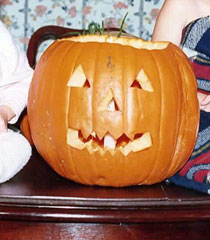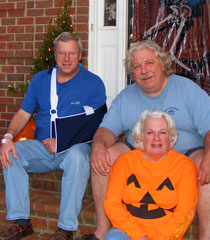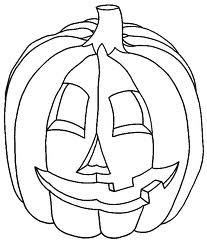 |
The Skarry Skelly 2020 Halloween Message |
|
Hey kids! What a difference a year makes, eh? I've warned you about that before. |
L
ast Halloween I wrote that there was nothing on the horizon to disrupt the traditional slide into Halloween partying and the cold weather holidays. And that was true as far as it went. But boy, the horizon changed in a hurry, did it not? Nothing like an out-of-control pandemic and a financial collapse, at least for the little people, to get your mind off your own troubles. I say the little people. While most of you were dealing with the most grim economic news of our lifetimes, America’s billionaires watched as their fortunes soared by $434 billion from mid-March and mid-May. That's according to a report from Americans for Tax Fairness and the Institute for Policy Studies’ Program for Inequality, based on Forbes's data for America’s more than 600 billionaires during the U.S. lockdown. I noted also last year that there was talk of a recession (like Phil Connors' blizzard in "Groundhog Day"). Again, little did we know. There were some troubling signs. Job growth by Halloween had slowed from the previous year. Quarterly GDP was averaging little more than 2 percent. Manufacturing was down. Corporate investment had slowed to a trickle.
Even the president's favorite economic gauge (which most economists don't exactly think of as such), the stock market, while still climbing had been a little choppy following a discouraging year-end slide in 2018. Ah, the chattering class. Always chattering. But once March arrived, COVID 19 would put all that brow-furrowing throat-clearing into proper perspective. The bottom fell out of everthing. The only question then was how deep a recession? And how many would have to die? Like the virus itself, its economic effects are global in scope and will probably be haunting us for some time. to come. In its October World Economic Outlook report, entitled "A Long and Difficult Ascent," the International Monetary Fund projects dire consequences from the virus on the fight against world poverty. Global growth is projected at minus 4.4 percent in 2020, improving modestly in 2021. But from there it is expected to gradually slow to about 3.5 percent into the medium term. And the IMF sees wide negative output gaps and elevated unemployment this year and next across both advanced and emerging market economies. It notes ominously, "Close to 90 million people worldwide could fall below the $1.90 a day income threshold of extreme deprivation this year." Wonder what those folks will spend on Halloween.
Fareed Zakaria notes the uneven economic effects of the pandemic recession on the Sunday morning news show GPS
Even in the U.S. it's hard to even talk intelligently about economic prospects. Simple comparisons are blurred by wild swings in jobs, earnings, opportunities and growth from one month to the next, with some subsets of people getting much harder hit than others. Besides. our thoughts now are more existential than just GDP. Who's had time to really worry about North Korea's nuclear program? Or about some crazy citizen militia getting panicked into lethal action somewhere in the frozen north by a deep fear of excessive government overreach? Or about climate change, aside from the concern that right now Mother Nature seems to be trying to kill us, with either fire or rain. Robert Frost was closer than he knew, and James Taylor ain't seen nothing yet. We haven't lost our sense of humor. Latex Halloween masks that look like the lumpy molecules of the SARS-CoV2 virus began popping up on Amazon last month and are outselling both Trump and Biden masks. (Wait until the president finds out the virus is more popular than he is.) Some are even made in China. The CDC's Halloween guidelines advise avoiding traditional trick-or-treating this year. But I see the stores are full of candy and costumes. (See below.) And the National Retail Federation remains upbeat. Here's what their annual Halloween survey, conducted by Prosper Insights & Analytics, is saying ....
Have yourselves a Happy Halloween. guys. Probably won't run into you in the bars this year. Florida is wide open now, by order of the governor. But me, I'm holed up here on the Panhandle, still too scared to go out, afraid of my own maskless shadow. Maybe we could Facetime. I'd sure like to show these home decorations to somebody. Love, |
 websitesammy home page |
|
How a press push by the National Confectioners Association helped to assure Americans that #HalloweenisHappening—resulting in weeks of pandemic-defying holiday candy sales.
Sept. 24, 2020
By Sam Bloch, The Counter Across the United States, grocery aisles are filling up with bulk bags of candy corn and milk chocolates. Bright red endcaps burst with seasonal treats. Stacks of plastic Jack O’ Lanterns wait to be sold. There’s just one problem: This year, according to federal guidelines, the annual ritual of Halloween trick-or-treating really shouldn’t happen—at least not the way it’s happened in the past.
On Monday night, as summer came to a close, the Centers for Disease Control and Prevention (CDC) issued new health and safety guidance for what could be, from a public health standpoint, a catastrophic autumn. To minimize further spread of the coronavirus, the agency said that fall holidays will need to be different this year, beginning with Halloween. Among the recommendations? No door-to-door trick-or-treating, costume parties, haunted houses, or hayrides. Even costume masks—which aren’t a substitute for cloth masks—aren’t enough to stop the spread of the virus. "Many traditional Halloween activities can be high-risk for spreading viruses," reads the guidance, which is meant to supplement, not replace, orders from local health authorities. "There are several safer, alternative ways to participate in Halloween," like carving pumpkins with your family, virtual costume contests, an outdoor movie night—or an open-air, one-way, walk-through haunted forest "where appropriate mask use is enforced." "If screaming will likely occur," CDC notes, "greater distancing is advised." If that spells doom for Halloween, the candy industry doesn’t want to hear it. For months, the National Confectioners Association (NCA)—a trade group that represents 600 candy manufacturers, suppliers, and brokers—has led an effort to ensure that the holiday it calls its Super Bowl goes on as planned. With billions of candy sales on the line, the group has taken up an aggressive press campaign, and enlisted a former CDC official, to reiterate a simple message: #HalloweenisHappening. "One thing is for sure—Halloween is happening!" reads one press blast, sent on August 10. "96 percent of Parents Plan to Celebrate Halloween," screams another release, sent August 18. "There will be regional differences across the country in terms of how people choose to celebrate," reads another, sent on September 9. "Whether this means trick-or-treating, more candy bowl moments at home with family and close friends, or just more time celebrating the season throughout the month of October, one thing is for sure—Halloween is happening." Americans eat a lot of candy every year, buying over $37 billion worth of chocolate, sweets, gum and mints last year in 2019, according to a March report issued by NCA. In a survey of 1,500 adults, 69 percent of respondents said they bought candy at the grocery store as part of regular shopping, though pharmacies and convenience stores represent major sales, as well. In recent months, food has been a continual source of personal comfort for many—so it shouldn’t surprise anyone that cheap, sweet, and ubiquitous candy has proven to be remarkably pandemic-proof. Between March 15 and September 6, chocolate and candy sales are up by 4 percent compared to the year prior, says Chris Gindlesperger, NCA’s vice president for public affairs. That’s driven by a 16-percent spike in grocery store sales, which have done brisk business during the pandemic. "Chocolate and candy have been very resilient in this Covid-19 environment," NCA’s president John Downs said in an August press release, announcing similar figures. "Consumers appreciate and value chocolate and candy during these uncertain times because of their uncanny ability to boost your mood and lighten your perspective." But "Halloween candy" has specific meaning in the candy industry, and it’s a bit of a different beast: the term refers to all seasonal candies specifically packaged for the holiday, like bulk bags of trick-or-treat-sized sweets. Despite the pandemic, these sales are up 13 percent over last year in a four-week period ending September 6. Sales of Halloween chocolate—think spooky Kit-Kats, orange-and-black M&Ms, and milk chocolates wrapped in Wolfman foil—are up 25 percent. Americans buy roughly 14 percent of all their sweets during the eight weeks that precede Halloween—a period that saw $4.6 billion in sales in 2019. For candy companies, it’s critical that those sales continue—no matter what fate may befall this year’s Halloween. It is the biggest of the industry’s "big four" holidays, which also include Valentine’s Day, Easter and the winter holidays. Fueled by costume parties and trick-or-treating, Americans buy roughly 14 percent of all their sweets during the eight weeks that precede Halloween—a period that saw $4.6 billion in sales in 2019. So while demand for Halloween candy is up so far, there’s no telling what could happen in the final weeks leading up to the holiday. That home stretch is a key period for candy companies: 55 percent of Mars Wrigley’s Halloween candy sales usually happen in the last two weeks of October, the Associated Press reports. |
Now, without the typical reveling, that late October business could be at risk. California theme parks have canceled their high-profile Halloween events. New York City put the kibosh on its annual Halloween parade, which normally draws crowds of over 50,000. Salem, Massachusetts, has dialed back a monthlong celebration. And, earlier this month, Los Angeles County became the country’s first public health depatment to issue guidance for safely celebrating Halloween. After intially banning trick-or-treating outright, the health department walked back its stance, saying the activity simply isn’t recommended.
So with billions of dollars of sales on the line, the candy industry has sprung into action. Some companies got a jump start, rushing their Halloween candy into stores two weeks early this year, says Lauren O’Toole Boland, an NCA spokesperson. That’s contributed to the bump in those seasonal item sales, which accounted for $749 million last year, according to NCA’s March report. The trade association also launched a public relations blitz aimed at the media and health officials in cities, states and in Washington, D.C. "We are optimistic that the Mayor will put together a fun, creative and safe Halloween celebration for the City of Chicago," reads a press release sent September 10, after The Chicago Tribune warned Mayor Lori Lightfoot not to "ghost" Halloween. This summer, NCA additionally commissioned two polls that have since been used to drum up anticipation for Halloween. In a poll conducted by The Harris Poll in June, 74 percent of millennial mothers and young parents said Halloween is "more important than ever" this year, and 90 percent said they couldn’t imagine the holiday without candy and that trick-or-treating is "irreplaceable." In a July poll conducted by Morning Consult, 63 percent of people said they will find "creative and safe ways" to celebrate Halloween. The end goal has been to create a sense that normal Halloween rituals—mostly involving the consumption of candy—are indispensable and unavoidable, even in a highly abnormal and uniquely dangerous year. Marketing materials from the National Confectioners Association, like the graphic shown here, helped establish a narrative that Halloween trick-or-treating can't be stopped—even by the Covid-19 pandemic. September 2020 Marketing materials from the National Confectioners Association, like the graphic shown here, helped establish a narrative that Halloween trick-or-treating can’t be stopped—even by the Covid-19 pandemic. Gindlesperger said NCA also "works very closely" with members of Congress, and encouraged the co-chairs of the Congressional Candy Caucus, Democratic Representative Ann Kuster of New Hampshire, and Republican Representative Jackie Walorski of Indiana, to seek "potential pathways for people to celebrate the Halloween season" safely. In August, Kuster and Walorski were among a bipartisan group of 30 members of Congress who signed a letter to CDC Director Robert Redfield to publicly comment on alternative Halloween activities—such as video costume parties, drive-through trick-or-treating, and "leaving packages of sweet treats for friends and neighbors to pick up"—that minimize exposure to the virus. "With the appropriate guidance from the CDC, Americans can celebrate Halloween throughout the month of October in ways that prioritize community safety and adhere to rigorous [social] distancing requirements," the letter reads. NCA even hired Stephen Ostroff, a former Food and Drug Administration (FDA) deputy commissioner and CDC epidemiologist, to craft public health messaging. In a September memo aimed at city and state health departments, Ostroff, now a private consultant, outlined "practical steps and ideas to follow that allow Halloween to be celebrated safely while still having fun, given that there will be regional differences across the country." Those recommendations are also published on an NCA website, Halloween Central, that the association says is "taking the guesswork out of Halloween." The site features other tips for Covid-era treating, along with newspaper editorials, testimonials from elected officials, and plenty of reminders that "experts agree" the holiday must go on. "We for years have been a part of the conversation around Halloween, because of the central role that chocolate and candy play in the holiday," Gindlesperger said. Ostroff was contracted for this year’s push, he said, because public health "is not an area where we’re experts, and we don’t pretend to be." Certainly, the candy industry does not see the CDC guidance as tantamount to canceling Halloween. To the contrary: In a statement, NCA said the guidance "reinforced that Halloween is happening, and provides inspiration for creative and safe approaches," whether that’s an "at-home celebration," or socially distanced "fun from a distance." Ostroff, the former FDA official, pointed specifically to the CDC’s suggestion of a "one-way," grab-and-go-style set-up at the edge of a driveway or lawn. Gindlesperger, meanwhile, points to a Cincinnati dad who made a six-foot candy chute, attached to a handrail, to deposit candy to neighborhood kids at a safe distance. "If that doesn’t speak to 80 percent of people believing in safe ways to celebrate this year," he said, "I don’t know what does."
|
